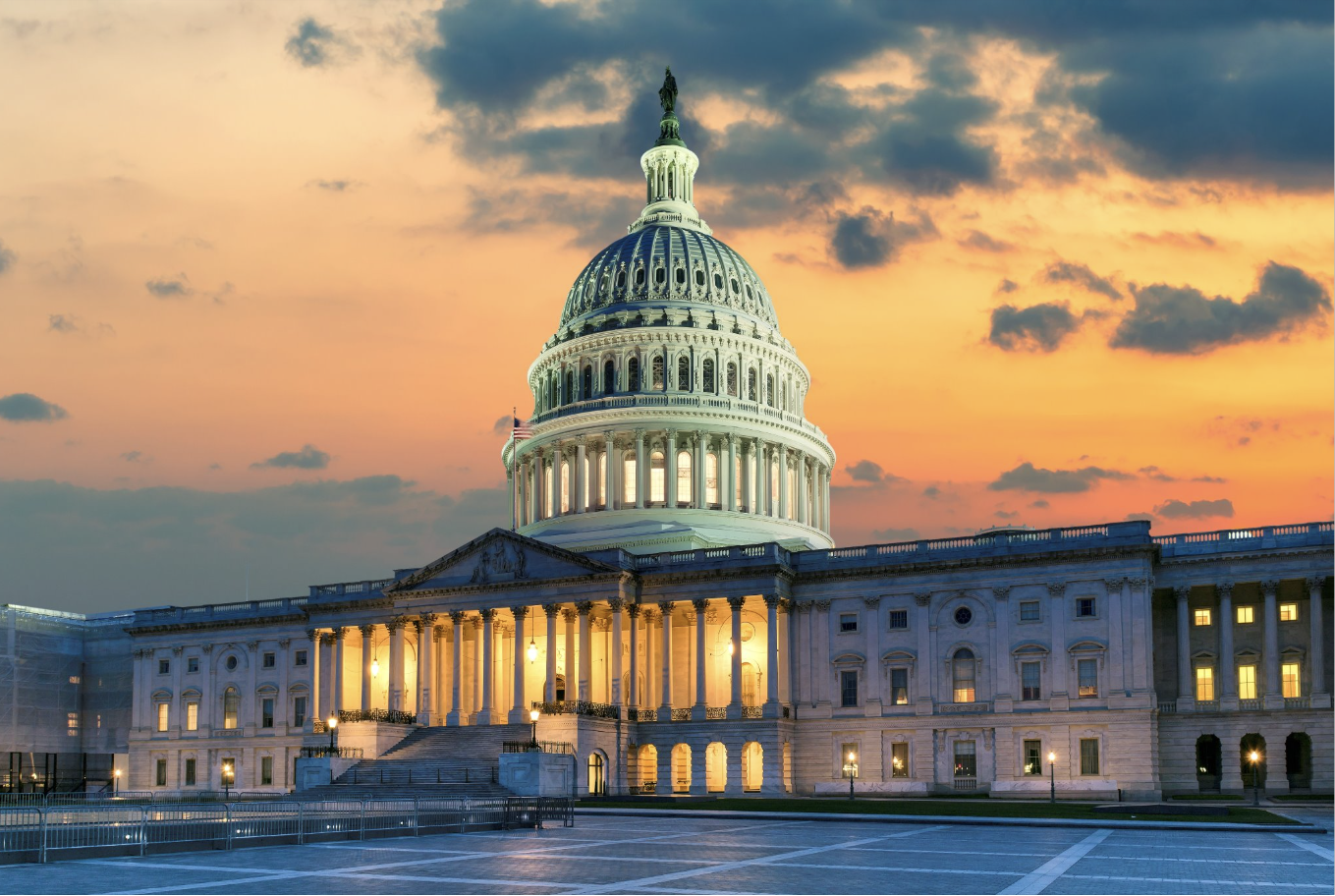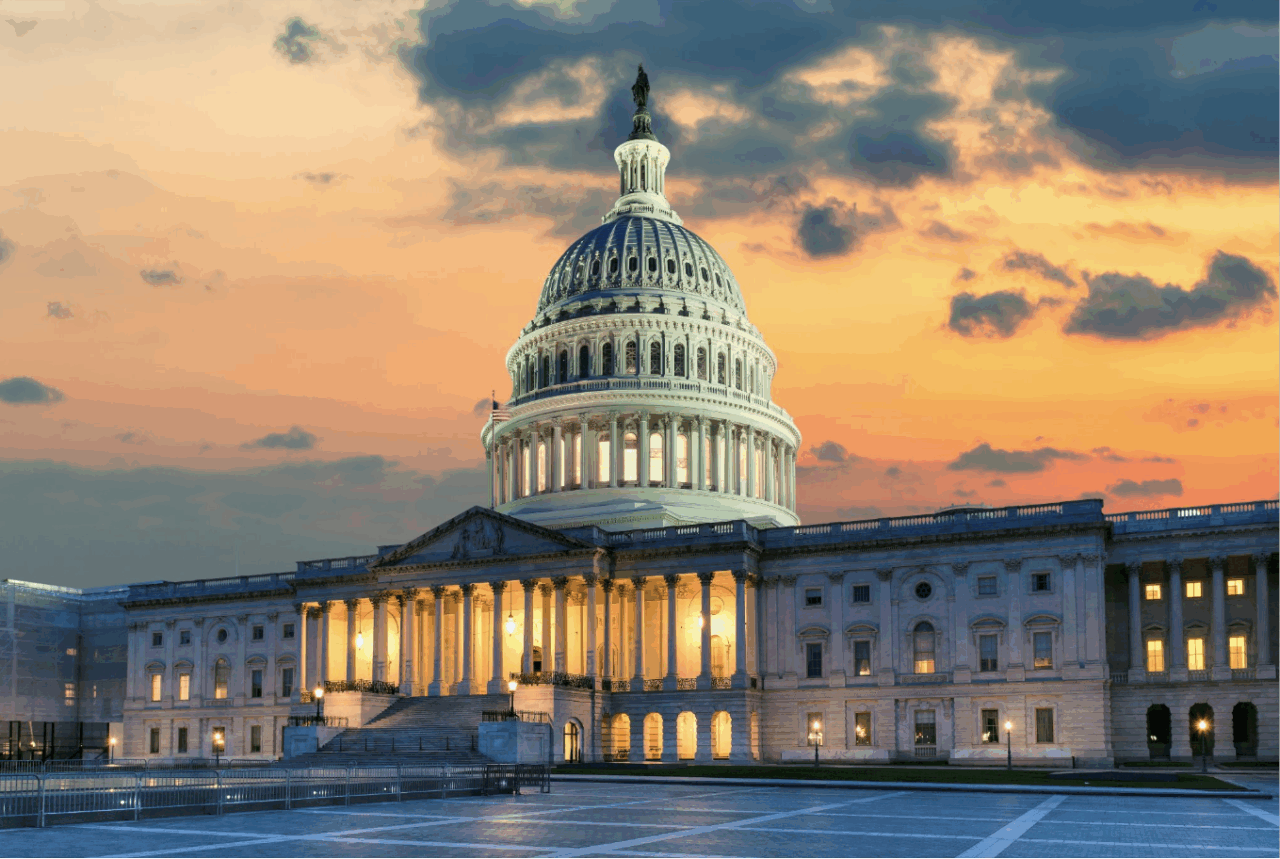Government Shutdown Week 3: Message Guidance
This Navigator Research report covers the latest messaging findings around the government shutdown.
BIG TAKEAWAYS:
- An impact message about health care outperforms a process message about Republican control of government.
- Expanding health care subsidies is popular across partisanship, including caveats around undocumented immigrants in messaging has little effect on popularity.
Impact Over Process
A majority of Americans agree that President Trump and Republicans in Congress have the power to end the government shutdown—but a message around Republicans agreeing to a compromise that would prevent health insurance costs going up in order to end the shutdown is overwhelmingly convincing.
Asked which side they agree with more, by 16 points Americans agree with the message:
- Trump and Republicans in Congress have the power to end the shutdown. Trump and Republicans are in full control of the federal government, including the White House and Congress, and are responsible for getting the government back up and running.
As opposed to the message:
- Democrats in Congress have the power to end the shutdown. The shutdown would end today if Democrats would just vote for a simple, nonpartisan bill to fund the government.
While this message is popular, it is less effective because it focuses on process rather than impact.
By contrast, focusing on the impact—health care—is much more powerful. When highlighting a potential compromise for health care, Americans agree that Trump and Republicans in Congress have the power to end the shutdown by 26 points, including among soft partisans by 48 points. This represents a 10-point net shift among all Americans and a 26-point shift among independents.
- Trump and Republicans in Congress have the power to end the shutdown. The shutdown would end today if Republicans would agree to a compromise that would prevent health insurance costs from going up for millions of Americans.
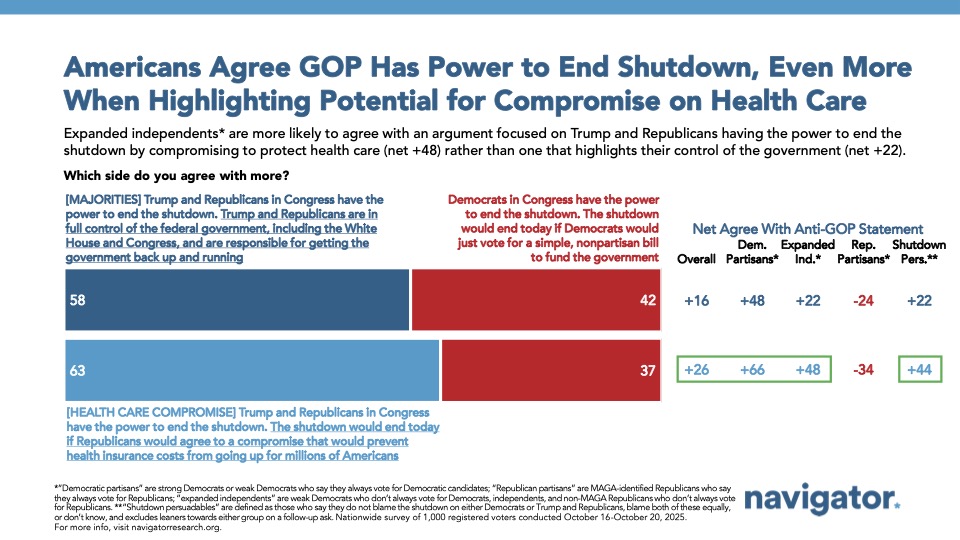
Messaging About Health Care Subsidies
Majorities across partisanship support the government extending health care subsidies for millions of Americans (73 percent support – 16 percent oppose). When framed with the caveat that none of the benefits would go to undocumented immigrants, support remained the same, with a slight increase in Republican support (from +32 to +49), but no shift among independents.
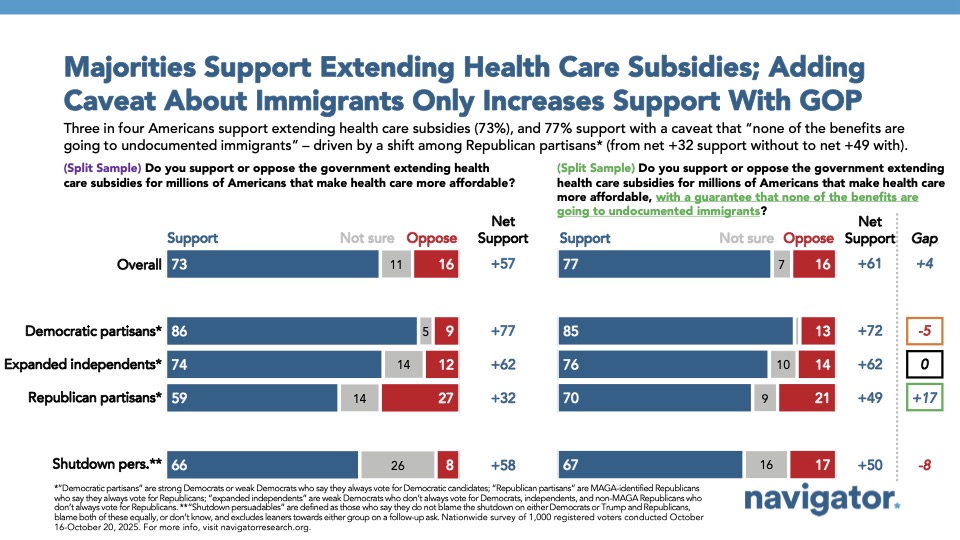
Reminder: If the shutdown ends without restoring any health care, Americans will have a negative view of how Democrats in Congress handled the shutdown situation by 32 points. Conversely, if a deal is reached to end the shutdown and restore health care, Americans will view how Democrats in Congress handled the shutdown positively by 37 points.
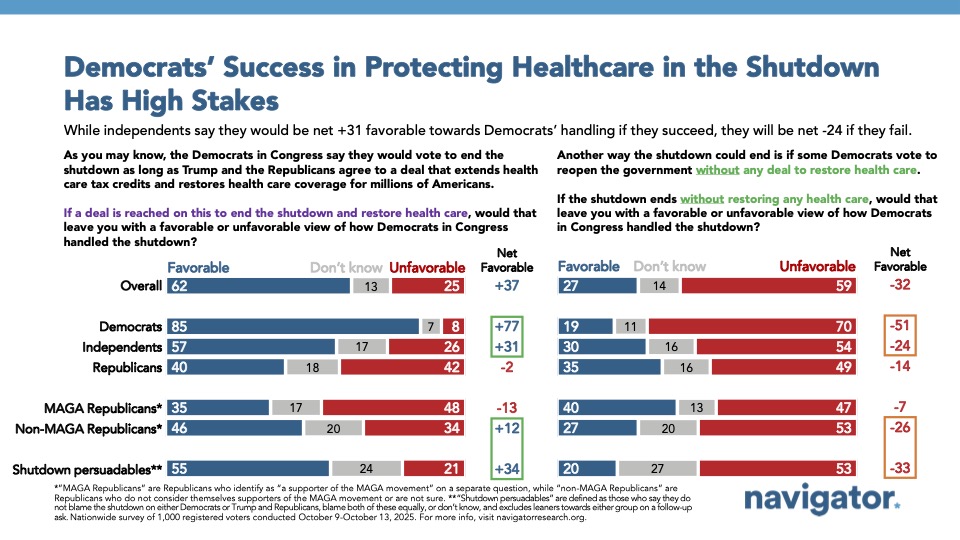
About The Study
Global Strategy Group conducted a public opinion survey among a sample of 1,000 registered voters from October 16-October 20, 2025. The survey was conducted online, recruiting respondents from an opt-in online panel vendor. Respondents were verified against a voter file and special care was taken to ensure the demographic composition of our sample matched that of the national registered voter population across a variety of demographic variables. The margin of error for the full sample at the 95 percent level of confidence is +/- 3.1 percentage points. The margin of error for subgroups varies and is higher.
